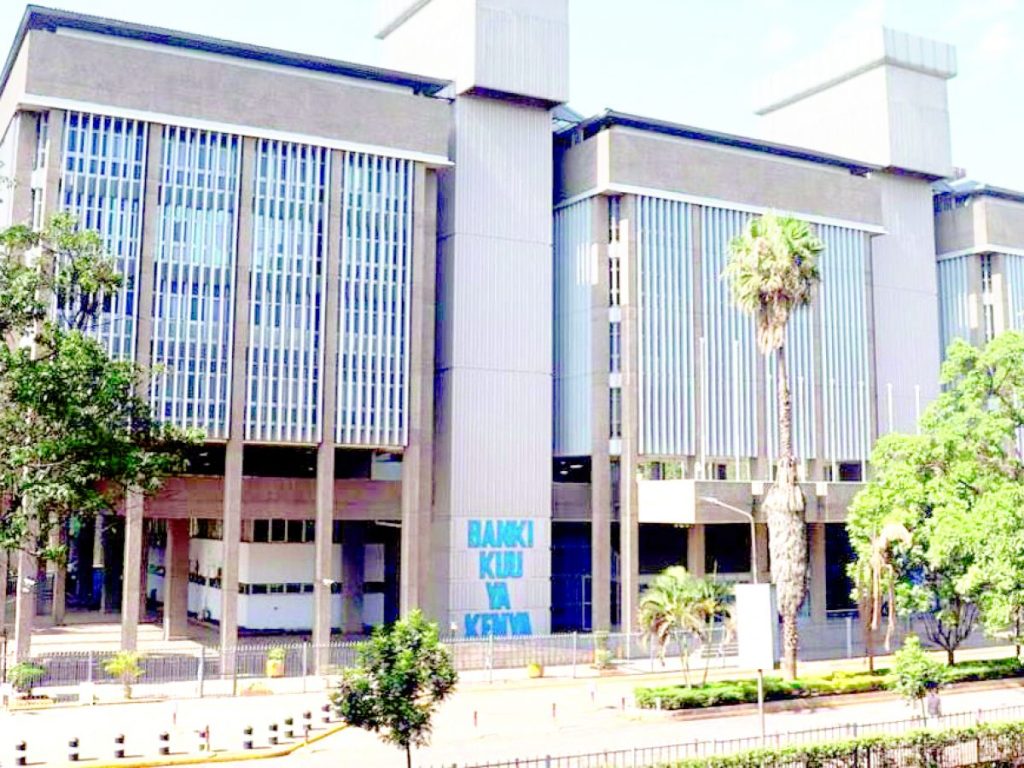
Dr.Kamau Thugge-CBK Governor
The Monetary Policy Committee (MPC) met on April 3, 2024, against a backdrop of an improved global outlook for growth and inflation, despite persistent geopolitical tensions.
The MPC reviewed the outcomes of its previous decisions and measures implemented to anchor inflationary expectations and contain exchange rate pressures.
• Global growth continues to recover, supported by stronger than expected growth in the United States, and robust growth in some large emerging market economies, particularly India. The main risks to the global growth and inflation outlook relate to the potential escalation of geopolitical tensions particularly the Israel-Palestinian and Russia-Ukraine conflicts.

Global inflation has moderated, but some stickiness has persisted in some advanced economies, driven by core inflation.Food inflation has continued to decline with improved supply of key food items, particularly cereals and edible oils.A key risk to inflation is international oil prices, which have trended upwards since January 2024 largely driven by disruptions to shipping through the Red Sea, and production cuts by OPEC+ and other allied oil producers.
• Kenya’s overall inflation declined further to 5.7 percent in March 2024 from 6.3 percent in February, driven by lower food and fuel inflation. Food inflation declined to 5.8 percent in March from 6.9 percent in February, reflecting lower prices of some food items particularly maize and wheat products, carrots, kales/sukuma wiki, spinach, and cabbages, following improved supply attributed to ongoing harvests and favourable weather conditions.
Fuel inflation declined to 12.3 percent in March from 13.4 percent in February, largely reflecting the impact of the shilling’s appreciation which resulted in a decrease in electricity prices and a downward adjustment in pump prices. Non-food non-fuel (NFNF) inflation remained stable at 3.6 percent in February and March.
 Overall inflation is expected to moderate further in the near term, supported by easing food and energy prices, pass-through effects of the recent exchange rate appreciation, and the impact of monetary policy actions which continue to filter through the economy.
Overall inflation is expected to moderate further in the near term, supported by easing food and energy prices, pass-through effects of the recent exchange rate appreciation, and the impact of monetary policy actions which continue to filter through the economy.
• Leading indicators point to continued strong performance of the Kenyan economy in the first quarter of 2024, reflecting robust activity in the agriculture and service sectors, particularly accommodation and food services, and information and communication.
The economy is expected to remain strong in 2024, supported by the resilient services sector, robust performance of the agriculture sector, continued implementation of Government measures to boost economic activity across priority sectors in line with the Bottom-up Economic
Transformation Agenda (BETA), and improved global growth outlook.
• The March 2024 Agriculture Sector Survey shows that respondents expect inflation to decrease in the next three months, on account of lower food prices in line with the expected favorable weather conditions, the appreciation of the exchange rate, and the reduction in fuel prices.
• The CEOs Survey and Market Perceptions Survey which were conducted ahead of the MPC meeting revealed increased optimism about business activity and economic growth prospects for the next 12 months. The stronger optimism was attributed to enhanced agricultural
performance on account of favorable weather and government interventions in the sector, easing inflation, strengthening of the Kenya Shilling and a resilient private sector. Nonetheless, respondents remained concerned about taxation, high interest rates, and geopolitical risks.
• The current account deficit is estimated at 4.3 percent of GDP in the 12 months to February 2024, down from 4.7 percent of GDP in a similar period of 2023, and is projected at 4.0 percent of GDP in 2024. Goods exports declined by 1.7 percent in the 12 months to February 2024 compared to an increase of 9.6 percent in a similar period in 2023.

The decline in exports in 2023 was across several categories, except food, petroleum products and manufactured goods exports which increased by 3.0 percent, 20.3 percent, and 1.4 percent, respectively. The increase in manufactured exports receipts reflects strong regional demand. Goods imports declined by 8.5 percent in the 12 months to February 2024 compared to a growth of 3.5 percent
in a similar period of 2023, reflecting lower imports across all categories, except food and crude materials.
Tourist arrivals improved by 27.6 percent in the 12 months to January 2024 compared to a similar period in 2023, and were 20.3 percent higher in January 2024 compared to January 2023.Remittances increased by 7.5 percent to USD 4,330 million in the 12 months to February 2024 compared to USD 4,026 million in a similar period in 2023.
• The CBK foreign exchange reserves, which currently stand at USD 7,136 million (3.77 months of import cover), continue to provide adequate cover and a buffer against any short-term shocks in the foreign exchange market.
• The banking sector remains stable and resilient, with strong liquidity and capital adequacy ratios. The ratio of gross non-performing loans (NPLs) to gross loans stood at 15.5 percent in February 2024 compared to 14.8 percent in December 2023. Increases in NPLs were noted in
the real estate, trade, personal and household, energy and water and building and construction sectors.
Banks have continued to make adequate provisions for the NPLs.
• Growth in commercial bank lending to the private sector stood at 10.3 percent in February 2024 compared to 13.8 percent in January 2024. Credit growth to selected key sectors was as follows: manufacturing (13.6 percent), transport and communication (7.5 percent), trade
(10.7 percent), and consumer durables (7.4 percent).The number of loan applications and approvals remained resilient, reflecting sustained demand particularly for working capital requirements.
• The Committee noted the ongoing implementation of the FY2023/24 Government Budget, which continues to reinforce fiscal consolidation.
The MPC noted that its previous measures have lowered inflation, addressed the exchange rate
pressures, and anchored inflationary expectations.
The Committee further noted that overall inflation is expected to continue declining in the near term, supported by lower food and fuel
prices, and pass-through effects of the recent exchange rate appreciation. Therefore, the MPC concluded that the current monetary policy stance will ensure that overall inflation continues to decline towards the 5.0 percent mid-point of the target range, and thus decided to retain the Central Bank Rate (CBR) at 13.00 percent.
The MPC will closely monitor the impact of the policy measures as well as developments in the global and domestic economy and stands ready to take further action as necessary in line with its mandate.The Committee will meet again in June 2024.









